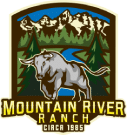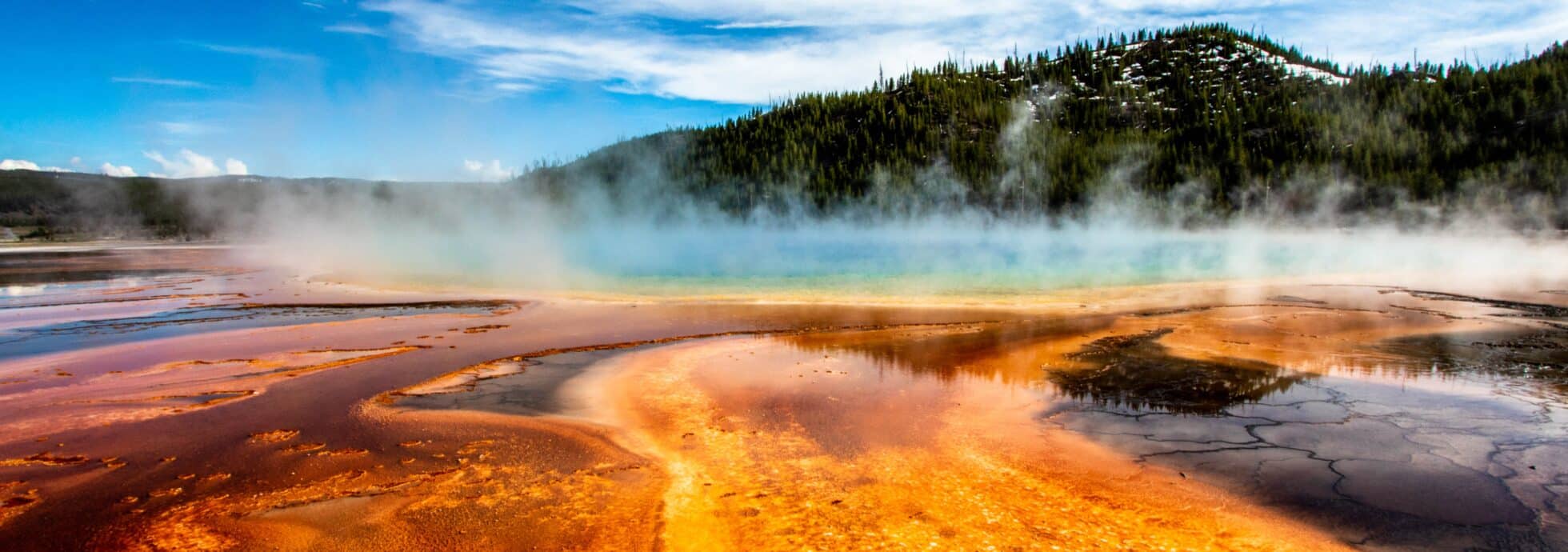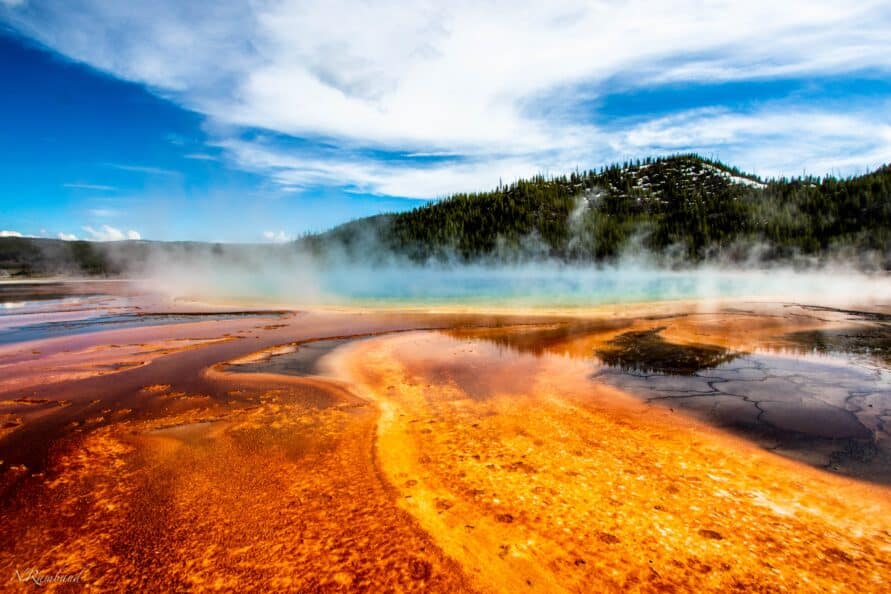What is West Yellowstone?
To visit Yellowstone, established in 1872, is to experience the world’s first national park. Marvel at the Grand Canyon of the Yellowstone and be awed by the many geothermal features of the park, including hot springs, mud-pots, and geysers, such as Old Faithful, one of its most popular features.
Visitors can explore the mountains, forests, lakes, and waterfalls and watch wildlife along the rivers or in the open grassy meadows. There is lots of activities in Yellowstone, including kayak fishing, camping, mountain biking, hiking, backpacking, snowshoeing, and lots more. Open year-round (with the exception of a few weeks each spring and fall), each season brings a new perspective to this vast ecosystem. People from around the world visit to fulfill this lifelong bucket list item. We like to think they all leave with a new appreciation for the wild lands in addition to an experience they will never have anywhere else.
Yellowstone was born on March 1, 1872 — making it the world’s first national park. When President Ulysses S. Grant signed the Yellowstone National Park Protection Act into law, it protected more than 2 million acres of mountain wilderness, amazing geysers and vibrant landscapes for future generations to enjoy.
Check out these interesting facts about our iconic national park:
- Half the world’s hydrothermal features are found at Yellowstone. Yellowstone National Park preserves more than 10,000 hydrothermal features — an extraordinary collection of hot springs, mud pots, fumaroles, travertine terraces and — of course — geysers.
- Yellowstone is a supervolcano. One of the world’s largest active volcanoes lies beneath Yellowstone. The first major eruption of the Yellowstone volcano occurred 2.1 million years ago and covered more than 5,790 square miles with ash. That’s among the largest volcanic eruptions known, and marks Yellowstone as a supervolcano (a term used to describe any volcano with an eruption of more than 240 cubic miles of magma).
- Yellowstone has its own Grand Canyon. The Grand Canyon isn’t just in Arizona — there’s also the Grand Canyon of the Yellowstone. Created by erosion from the Yellowstone River, the canyon is more than 1,000 feet deep, 1,500-4,000 feet wide and roughly 20 miles long — it also provides endless views.
How Far Are You From West Yellowstone?
Yellowstone National Park is located in the Rocky Mountains of the United States, with the majority of the park located in the northwest corner of the state of Wyoming and a small portion of the park also being in the states of Montana and Idaho.
Mountain River Ranch is about 1 hour and 40 minutes away from West Yellowstone.
There are 4 major Interstates that will bring you within close proximity to Yellowstone. You can travel towards Yellowstone from any direction and you will find one of these Interstates that will lead you towards the park. So, no matter which direction you are driving from, if you find one of these Interstates, you should be able to use the directions below to guide you on the final stretch to Yellowstone National Park. Interstate 90 is North of Yellowstone, Interstate 80 is South of Yellowstone, Interstate 15 is to the West of Yellowstone, and Interstate 25 is to the East. Although there are other ways to get to Yellowstone via smaller state roads and side roads, the directions below are compiled using main roads and heavier traveled routes.
When does West Yellowstone open?
Roads From West Yellowstone and Mammoth Hot Springs to Old Faithful Set to Open Friday, April 16th, 2021 at 8:00 AM.
Restroom facilities will be available at Madison Junction and Old Faithful starting April 16th, with pay-at-the pump fuel available 24 hours a day at both the Upper and Lower Service Stations, and all year at Mammoth, and Tower.
The Old Faithful Visitor Education Center, the Geyser Grill and the Bear Den Gift Shop will open for the season on Friday, April 16th. The Old Faithful Snow Lodge, Cabins and Restaurant, the Old Faithful Upper Store and the Lower Service Station convenience store all open for the season on Friday, May 7th.
Visitors should be aware that spring in Yellowstone is very unpredictable and often brings cold temperatures, high winds and falling snow. Even cleared sections of roads can be narrow and covered with a layer of snow, ice and debris. Therefore, visitors should use extreme caution when driving as road clearing operations can be ongoing at any time throughout the park. In the case of extreme weather conditions, temporary road closures are also possible with little or no advance warning.
Park entrance fees will be waived April 17th as part of National Park Week. The week-long annual celebration is designed to encourage people to visit one of America’s 401 national park system sites. A seven-day pass to Yellowstone and Grand Teton National Parks is normally $ 30.00 for each park for a private, non-commercial vehicle.
The road from the park’s North Entrance at Gardiner, Montana through Mammoth Hot Springs, and on to the Northeast Entrance and the communities of Silver Gate and Cooke City, Montana, is open all year.
Photo by Nicolasintravel


